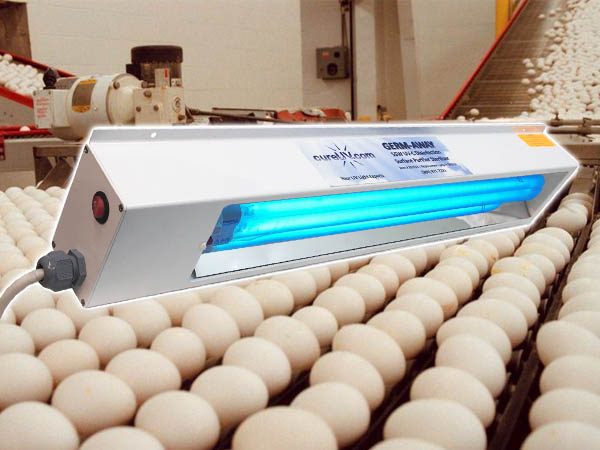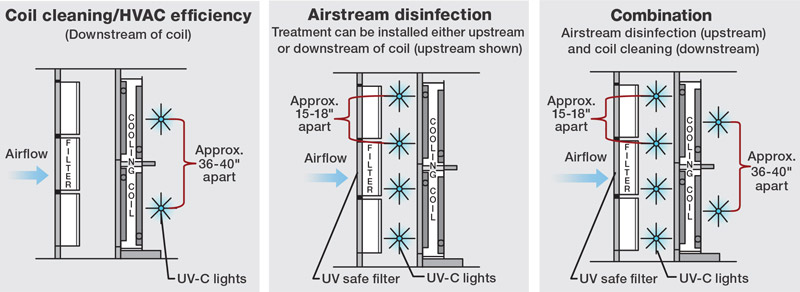Far-UVC Innovation Unleashed: Transforming UV Sanitizers for Maximum Effectiveness
Wiki Article
Far UVC Light: A Game-Changer in the Battle Versus Airborne Pathogens
In the ever-evolving battle against air-borne virus, the emergence of far UVC light has actually triggered considerable rate of interest and possibility. What exactly is far UVC light, and exactly how does it function?The Scientific Research Behind Far UVC Light
The scientific principles underlying using Much UVC light as a possible solution for combating airborne microorganisms are both complex and encouraging. Much UVC light describes a particular variety of ultraviolet (UV) light wavelengths, commonly between 207 and 222 nanometers, which have been found to efficiently eliminate or suspend bacteria such as microorganisms and infections. Unlike conventional UVC light, which has a shorter wavelength and is known for its germicidal homes however can likewise hurt human skin and eyes, Far UVC light has actually been revealed to be risk-free for human exposure.The essential system behind the efficiency of Far UVC light hinge on its capability to permeate and ruin the genetic material of microorganisms, including their DNA and RNA. When exposed to Far UVC light, the genetic product undertakes a procedure called photodimerization, where nearby bases in the DNA or RNA molecule bind together, avoiding replication and providing the microbe not able to replicate or trigger infection.

Exactly How Much UVC Light Works
Far UVC light runs by utilizing certain ultraviolet wavelengths to efficiently counteract bacteria and stop their duplication, making it a promising option for combating airborne microorganisms. Unlike conventional UVC light, which is dangerous to human skin and eyes, far UVC light has much shorter wavelengths, typically in the array of 207 to 222 nanometers (nm), that do not penetrate the external layer of the skin or the tear layer of the eye. This makes it safe for constant human direct exposure, while still being lethal to viruses and microorganisms.The effectiveness of much UVC light hinge on its capability to ruin the dna and pass through and RNA of microorganisms. When subjected to much UVC light, the hereditary material of these virus is damaged, making them incapable to replicate and infect cells. In addition, studies have shown that much UVC light can effectively inactivate airborne infections, such as flu, measles, and coronaviruses, consisting of SARS-CoV-2, the virus accountable for COVID-19.
In addition, much UVC light is also capable of sanitizing surface areas and things in an encased space. By installing far UVC lights or utilizing mobile much UVC light tools, it is feasible to continuously disinfect the air and surfaces, decreasing the danger of airborne transmission of microorganisms.
Advantages of Far UVC Light
Using much UVC light offers a range of substantial advantages in combating air-borne microorganisms and ensuring a much safer environment for continual human exposure. Among the key advantages of far UVC light is its capability to effectively counteract various sorts of dangerous bacteria, infections, and fungi without triggering injury to people. Unlike standard UV light, which can be hazardous to human skin and eyes, much UVC light has a shorter wavelength that enables it to target and damage pathogens while posturing minimal danger to human wellness.
Furthermore, far UVC light is much safer for the atmosphere compared to standard sanitation approaches. Chemical anti-bacterials often include damaging active ingredients that can have adverse influences on the setting. Much UVC light, on the various other hand, does not produce any damaging by-products or residues, making it a much more green and lasting remedy.
Applications of Far UVC Light
Much UVC light has verified to be effective in removing airborne microorganisms such as fungis, infections, and bacteria. Unlike standard UV light, far UVC light is risk-free for human direct exposure, making it ideal for constant use in public rooms such as offices, health centers, and schools.Another application of far UVC light is in the health care sector. It can be made use of to disinfect healthcare facility rooms, running cinemas, and clinical equipment, decreasing the danger of healthcare-associated infections. Furthermore, much UVC light can be included right into HVAC systems to purify the air circulating in buildings, offering an added layer of security against airborne over here microorganisms.
Additionally, far UVC light can be used in the food market to stop foodborne health problems. It can be used to sanitize food handling facilities, killing bacteria and other microorganisms that might infect food items.
Future Effects of Far UVC Light
The possible future applications of much UVC light are huge and hold guarantee for different industries and sectors. Among the vital locations where far UVC light could have a significant influence remains in health care settings. Medical facilities and clinics can use far UVC light to decontaminate person spaces, operating theaters, and waiting locations, minimizing the risk of healthcare-associated infections - far-uvc. This could possibly result in improved person results and decreased healthcare expenses.Additionally, using far UVC light in public rooms such as airports, train terminals, and mall might help control the spread of air-borne virus. By constantly decontaminating these areas, the danger of transmission could be substantially lowered, offering a more secure environment for individuals.
An additional potential application of far UVC light remains in the food sites industry. Far UVC light might be made use of to disinfect cooking surface areas, packaging materials, and storage space locations. This could help stop the contamination of food and reduce the occurrence of foodborne health problems.
In addition, far UVC light might be used in HVAC systems to sanitize the air flowing in buildings. This might be specifically advantageous in jampacked rooms such as colleges, workplaces, and theaters, where the threat of air-borne transmission is greater.
Verdict
To conclude, far UVC light has emerged as a game-changer in the fight against airborne microorganisms. Its special properties and ability to safely kill viruses and bacteria make it a promising solution for various applications. From public spaces to healthcare setups, much UVC light deals countless advantages in minimizing the transmission of illness. With additional r & d, its widespread implementation could have click for more info substantial effects for the future of infection control.
Far UVC light refers to a specific array of ultraviolet (UV) light wavelengths, commonly in between 207 and 222 nanometers, which have been found to properly eliminate or inactivate microorganisms such as viruses and microorganisms. far-uvc. Unlike traditional UVC light, which has a shorter wavelength and is recognized for its germicidal residential properties however can also damage human skin and eyes, Far UVC light has been revealed to be risk-free for human exposure
Unlike standard UVC light, which is damaging to human skin and eyes, much UVC light has shorter wavelengths, commonly in the variety of 207 to 222 nanometers (nm), that do not pass through the outer layer of the skin or the tear layer of the eye. Unlike standard UV light, which can be damaging to human skin and eyes, far UVC light has a much shorter wavelength that allows it to target and ruin pathogens while presenting minimal threat to human health.
Unlike standard UV light, far UVC light is risk-free for human exposure, making it appropriate for continual use in public rooms such as schools, medical facilities, and workplaces.
Report this wiki page